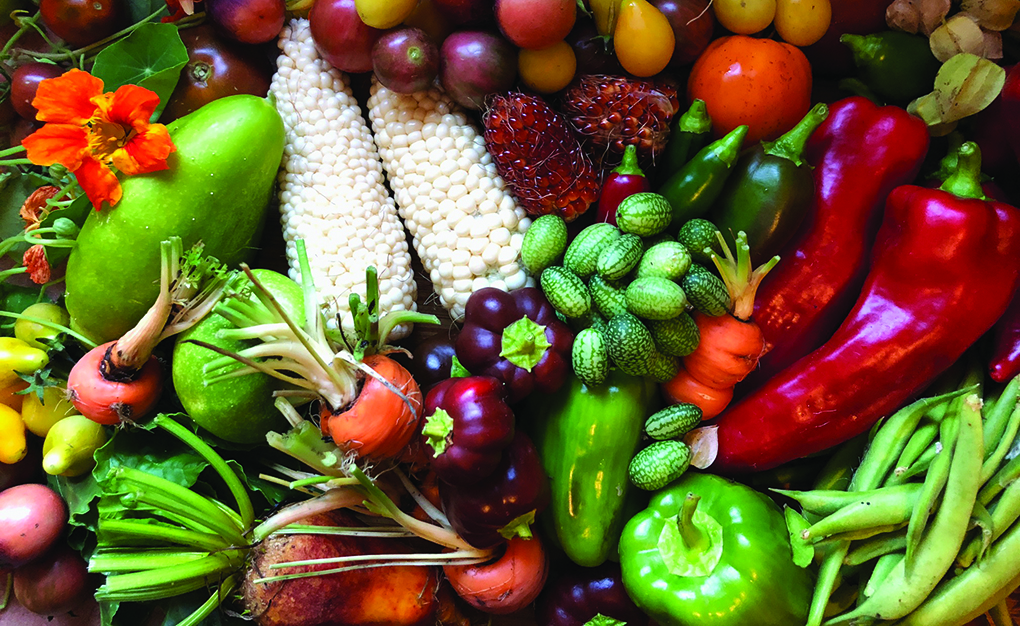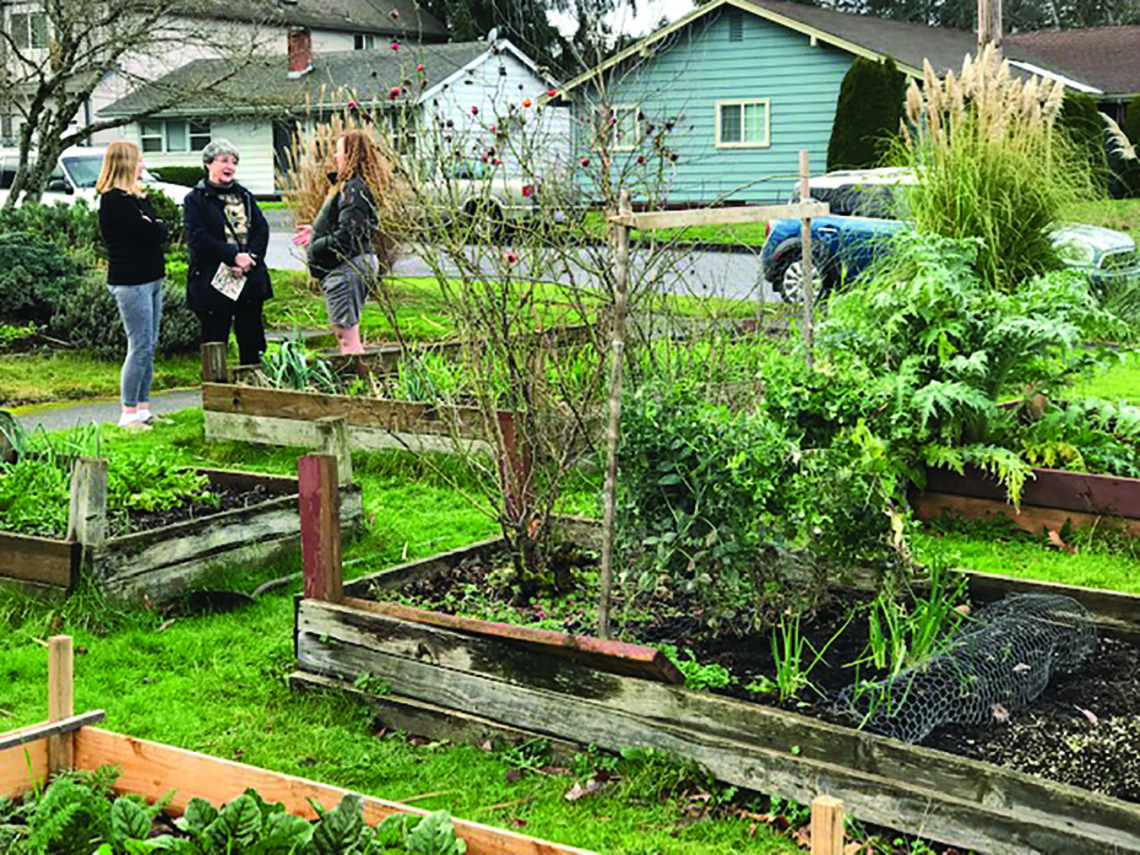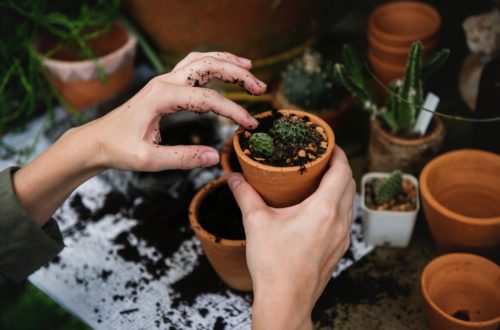From the Landlord
BY KIT
It started eight years ago when one of my tenants asked if he could build two raised beds in the yard of the four-plex my husband and I own in North Portland.
Being a gardener myself, I was thrilled about the request. I only asked that he garden organically, which he supported. From there, another tenant built more raised beds, and the next tenant constructed even more. We now have twenty garden beds of veggies with three of the four residents growing their own food. My husband and I moved into one of the units last March and after my first summer living on this property, my garden grew beautifully and my freezer is filled with the rewards.
It’s deeply satisfying to have this kind of community in my own yard shared by my tenant/neighbors. I like encouraging people who have never gardened before to give it a try. It’s exciting to see them succeed.
Everyone is allotted a raised bed and if they want another one, great! I’ve planted two pear trees, a peach tree, a cherry tree, six blueberry bushes, raspberries, a loquat tree, donated by a friend, and I’m working on strawberries and a couple of apple trees for next season. My intention is for all the fruit to be equally shared by all the tenants. My goal is that the property will eventually feed everyone living in the building.
I look at the yard differently each season. I find little places where something could be planted. I learned this from my tenant and neighbor, Michele. She uses every inch of her raised beds. So, if I see a small area not being used, I plant something there, and voila, food!
Now, I know what other landlords must be thinking, the water bill! Yes, there is an increase in the summer quarter of my water bill but it’s nominal. We had an unusually hot summer in 2018 and we had to water a lot, but my bill only went up approximately $30 per month for three months. I’m happy to pay for that. The amount of food that was generated more than paid for the water. Every season we find more ways to conserve the water like putting slightly decomposed straw in the beds to absorb and hold water so that we don’t need to water every day.
All in all, it’s been a great experience and has created a little community among the people living in the four-plex. I encourage landlords to look at their property and see if there isn’t some space, no matter how small, where food can be grown. If the tenant pays for the dirt and plants to fill their raised bed then the cost is minimal. And, even more important, it creates community.
I have my eye on space for kiwi!
From the Tenant
BY MICHELE
My parents were depression-era farm kids who grew up in a time and place where men and women needed to have practical knowledge about a little bit of everything. They were part carpenter, hunter, farmer, seamstress, veterinarian, and mechanic. They made most of their own clothes and household items, homemade remedies against illness, and preserved food against even leaner times. And even though I grew up in the city, my parents kept much of their ways alive and instilled in me the importance of doing for oneself, self-sufficiency.
One of the ways I keep that alive is through what I like to call “urban crofting,” a sexy term for being a renter with a bunch of garden space. A croft is a term used in Britain for a rented house with a plot of land that can be farmed. For me, it’s an apartment with a landlord who is very supportive of sustainable land use and self-sufficiency. It’s not a huge space, but I have about 500 square feet of gardening space at my disposal. With that, I grow most of my produce for the year: grains like barley and quinoa, potatoes, carrots, and other roots, beans, peas, greens, onions, artichokes, chilies, blueberries, figs, apples, hops, grapes, squash… all in all, about 45-50 types of edible plants supplemented by communal fruit trees. In addition to the vegetables, I also maintain a bed of medicinal and useful herbs which are turned into things like homemade teas, tinctures, soaps, and salves.
Admittedly, it can be a little time-consuming. From January when I start sweet potatoes on the kitchen windowsill, through October when I am planting garlic and appraising my beds and soil for the next year, there is always work to do. But there are a lot of benefits to making the effort:
• Greater control over what I consume. I use virtually no chemicals, just homegrown compost, pesticide, and fertilizer (I do buy an eco-friendly slug bait – it’s Oregon).
• A significantly reduced food bill
• Year-round vegetables: I practice succession planting, rotating in crops as the seasons change so that I have fresh vegetables from the garden every month of the year.

Healthier food options with more variety (think parsnip cake, beet soda, and turnip fries – who knew?) I love it. Time spent in the garden takes the stress out of the day and ties me to the earth. Sharing knowledge and produce with my neighbors builds a tighter community. It doesn’t take acres of land or a radical change of lifestyle. It might be a small container garden on the balcony or a raised bed or two in the backyard. But I highly encourage others to grow more of their own food and foster their own self-sufficiency whatever the scale and for whatever reason.
Kit and Michele wanted to share their story, but preferred to remain anonymous. We thank them for sharing and hope that their unique renter-landlord relationship will inspire other non-homeowners to explore creative homesteading ideas.




